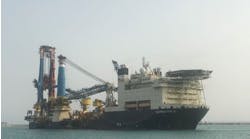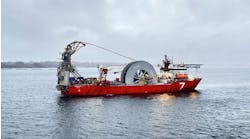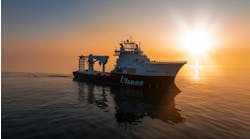Offshore staff
ZUG, Switzerland – The Nord Stream consortium has completed inspection of the internal condition of the twin Nord Stream gas trunklines in the Baltic Sea.
This involved sending a 7-m (23-ft) intelligent pig weighing more than 7 metric tons (7.7 tons) through thepipeline from Russia to Lubmin, northern Germany, travelling at 1.5 m/s (49 ft/s) and propelled by the gas pressure.
During the 10-day journey the pig collected high-resolution data on material integrity along the 1,224-km (760-mi) route.
Nord Stream claims the approach was the first for a pipeline of such a length, and with a wall-thickness of up to 41 mm (1.6 in). ROSEN Group in Lingen, Germany, developed the pigging system, which features an array of electronic sensors to screen the material integrity and the pipeline’s geometry.
It collected more than 1 terrabyte of data on its journey from Russia, recording the data at a rate equivalent to 12 megabits/s, 30 times faster than cellular data networks, the consortium says.
Another aim of the exercise was to document the pipelines’ exact geographical position. Initial evaluation suggests the pipes have moved minimally while under full pressure, with no apparent corrosion or deformation.
During 2012 and early this summer, Nord Stream had examined the external condition of both pipelines using ROVs. Results from these inspections will form the baseline data for regular inspection cycles planned over the next few years.
This should allow early detection of any potential changes in the position of the pipes, incipient corrosion, and even small mechanical defects.
9/30/2013


